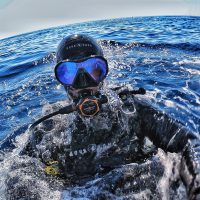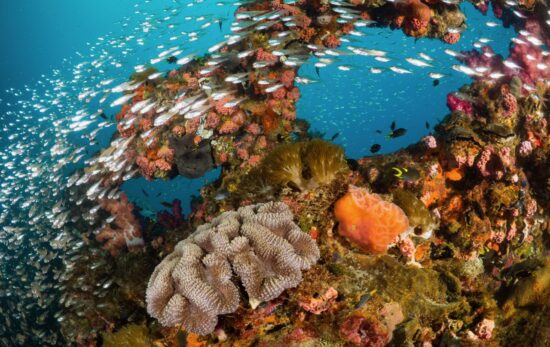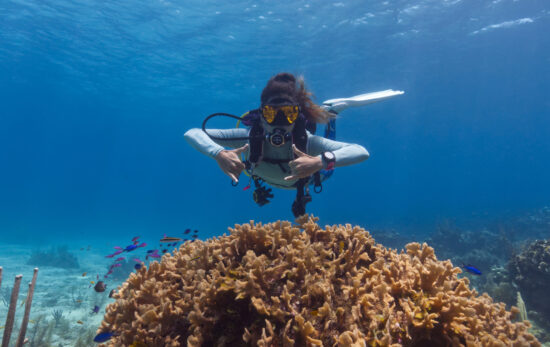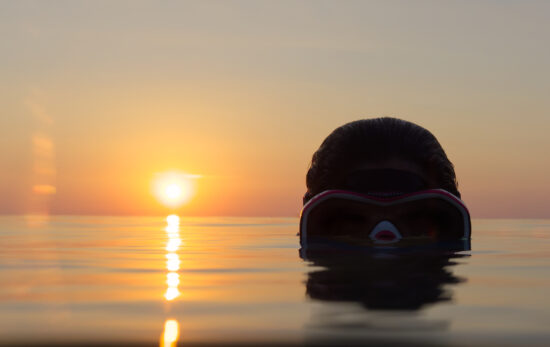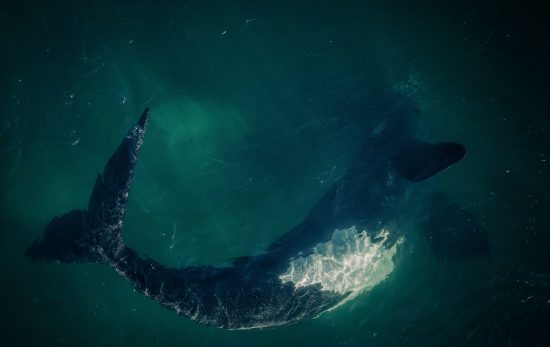The Costa Brava is a top tourist area which lies in the northeast of mainland Spain. Part of the province of Girona, the Costa Brava attracts more yearly visitors than most areas of this country.
With only a few kilometres between the most charming beaches of the Mediterranean and the snow-capped peaks of the Pyrenees, Costa Brava offers the perfect playground for all kinds of fun activities: skiing, hiking, mountain biking and, of course, diving!
The Spanish Costa Brava is known for its stunning scenery, crystal clear waters and rich history. It’s a really interesting place to dive with several different dive sites you can visit.
This coastal region of Catalonia (Spain) has everything from long stretches of golden sand to secret rocky coves that can only be reached on foot.
Where to Go Diving in Costa Brava
Being a region primarily driven by the sea and with a coastline of 200km (125 miles), Costa Brava has many watery things to do, including scuba diving in the summer months.
The area offers a wide variety of diving spots, suitable for all levels. There is a great diversity of underwater flora and fauna, including coral beds, multi-coloured sea fans and sea grasses, where giant groupers, barracudas, seahorses and many more sea creatures live.
But there’s a lot more. Beyond the beauty of its blue, Costa Brava also offers a stunning green that will make you want to spend your surface interval exploring it all. In fact, combining diving in its wonderful waters with visits to its charming villages is the perfect plan for a dream weekend in Catalonia.
The fact that almost a third of the place is a protected natural area should give you a good idea of what you will find: jaw-dropping & contrasting natural parks to discover between your dives!
Bear in mind that some of these sites may require special permits and/or the hiring of local guides to help ensure safe and responsible diving.
The Best Dive Sites in Costa Brava
The Costa Brava has so many wonderful towns and villages that it can be hard to pick one for your holiday stay. Here’s a selection of my favourites; they are well worth it!
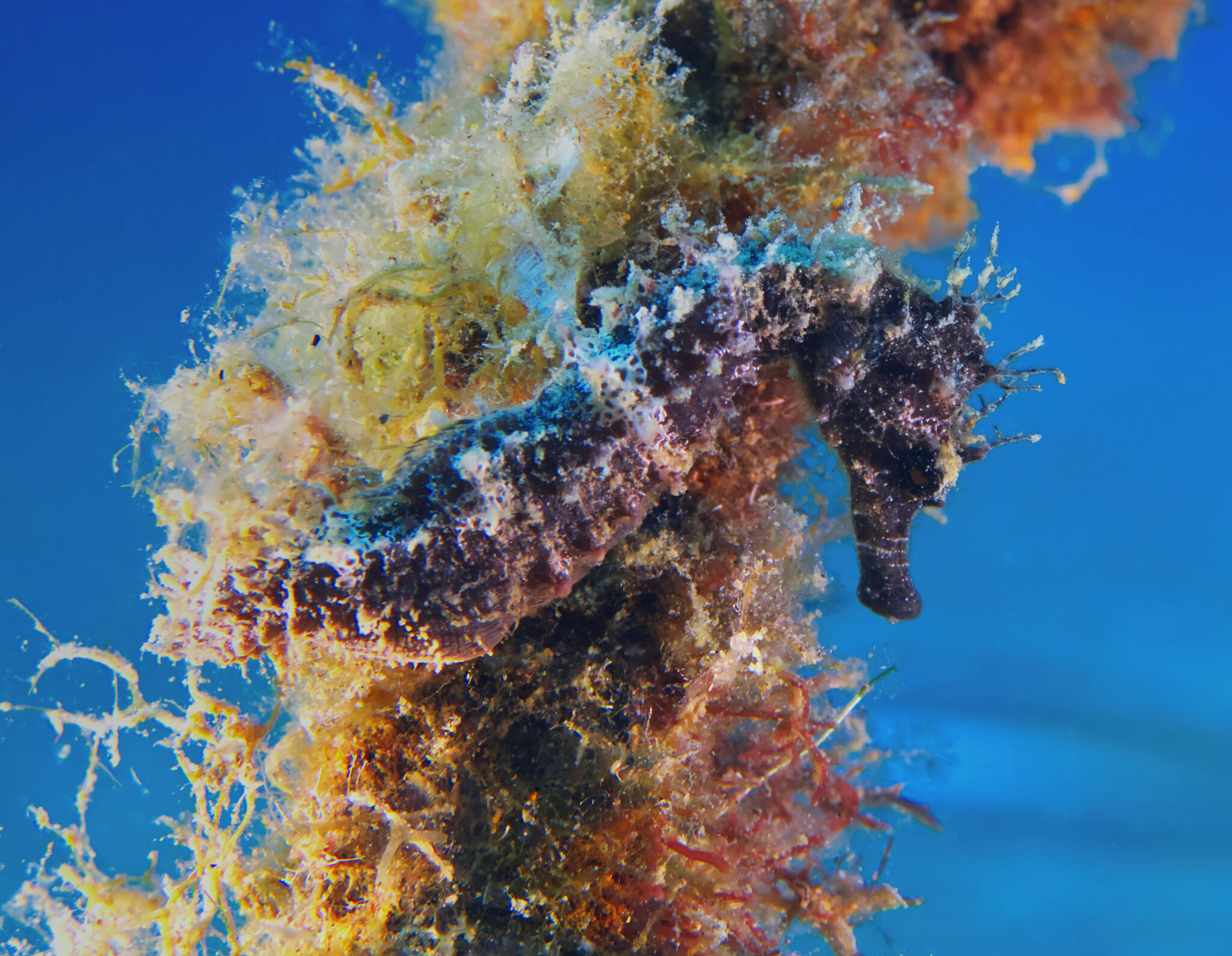
Cadaqués, the Place that Inspired Dalí
Another popular dive site on the Costa Brava is the Cap de Creus Marine Reserve, located near the town of Cadaqués. This reserve has a abundant and varied marine life and unique underwater rock formations. You can also find some natural caves and arches.
Diving in Cadaqués is to immerse yourself in one of the most beautiful underwater worlds in the Mediterranean. The great diversity of fauna and flora of Cap de Creus and its incomparable richness in fish contributed to its being declared a maritime-terrestrial Natural Park in 1998.
Dalí was moved by the wildness of the Costa Brava, particularly its rock formations, which can be seen in many of his art works. After your dives, you can visit a number of Dalí attractions in the area – such as Dalí’s summer house in Portlligat (near Cadaqués) and the Dalí Theatre Museum in Figueres.
Palamós
Palamós is another spot on the Costa Brava which is very popular with divers. The bay of Palamós has an abundance of marine life with a seabed is considered to be one of the richest and most diverse on the Catalan coast.
Here you can find artificial reefs. You can also find underwater caves and caverns that offer an exciting challenge for the most experienced divers. Palamós has several dive centers that offer training courses and equipment rental for those who wish to get started in scuba diving. Offering a wide variety of options for divers of all levels, it is a place you shouldn’t miss if you are interested in diving on the Costa Brava.
Between Palamós and Calella de Palafrugell, there are some unique islands that are worth visiting underwater: Les Ílles Formigues (Hormigas Islands), a series of canyons full of gorgonians where it will not be difficult to find lobsters, octopuses, moray eels and a multitude of nudibranchs.
Easily accessible from the area, you can also find three fantastic seamounts with colourful gorgonians called Els Ullastres and the Boreas shipwreck, sunk in 1989, creating an artificial reef 32 meters deep that all divers enjoy.
And while you wait the necessary time between dives, you can take a relaxed walk along the ‘Camino de Ronda’. It is a long road that runs from cove to cove and beach to beach the entire coast of Palamós.
Calella de Palafrugell
An old fishing village with a magical atmosphere. Calella de Palafrugell is a small town full of white houses on the seashore with wooden boats anchored on the beach where walking you will feel like in a fairy tale. In addition, the literal part of this area has a lot of beautiful coves with crystal clear waters around it.
The main Cove of Port Pelegrí is the perfect place to take a PADI Open Water course or for a relaxed dive. You can usually see scratches, octopuses, nudibranchs, some moray eels, and occasionally stingrays.
Illes Formigues, Els Ullastres, the Boreas shipwreck and others are also easily accessible by boat from Calella.
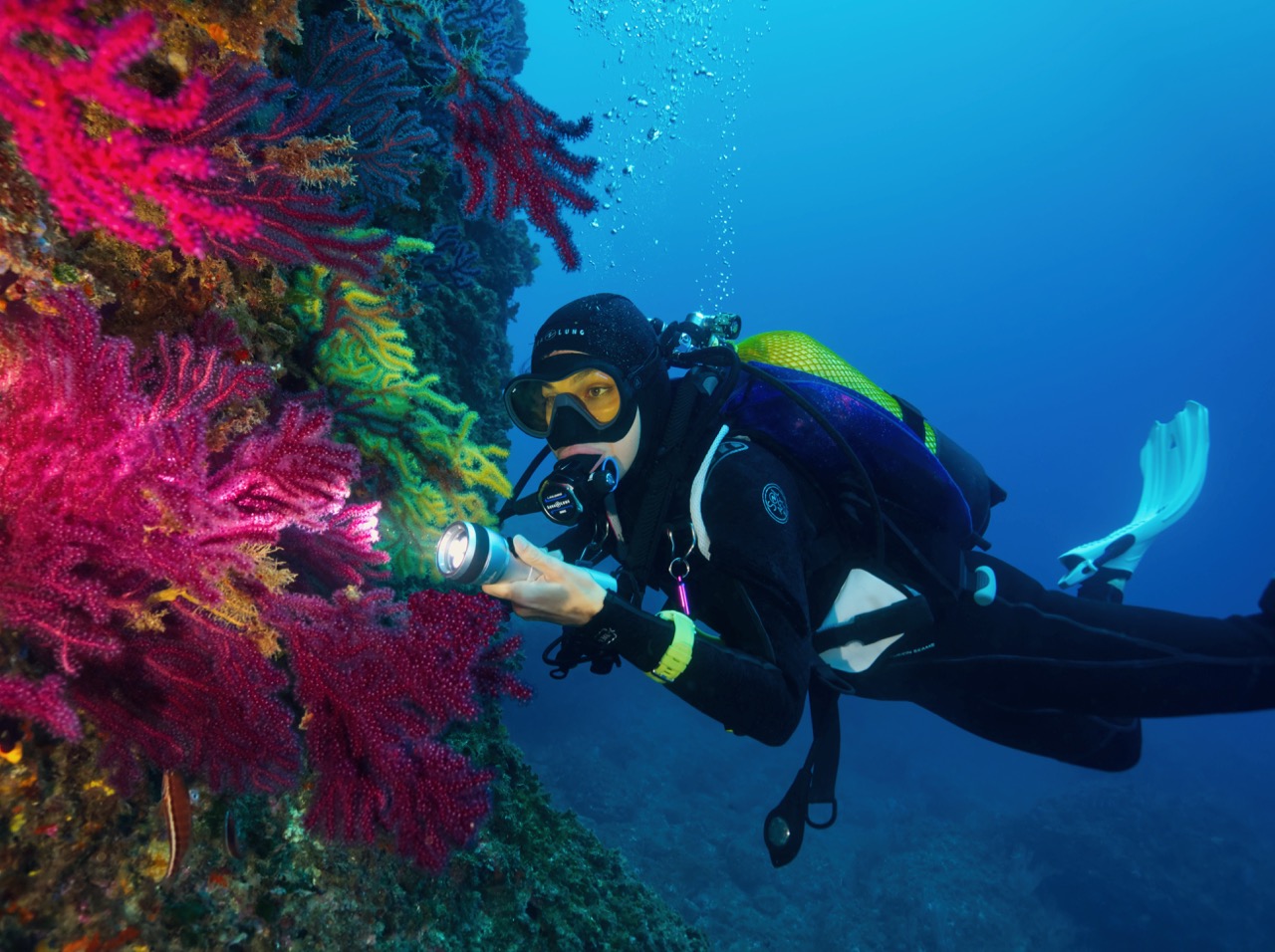
Begur
Begur has a small ruined castle on top of its hill and the views are truly as spectacular as the nearby dive sites.
Such is the case of Furió Fitó, one of the most impressive underwater rock formations on the Mediterranean coast, where the large and colorful gorgonians stand out.
Tossa del Mar
Tossa de Mar is that rare town where you can simultaneously watch the Mediterranean waves and get a charming view of medieval history — without even turning your head.
Its main beach, Platja Gran, is dotted with colorful boats and sun seekers, especially in the summer. It is presided over by the medieval fortress of the old town (Vila Vella), a truly unique and picturesque sight!
For those who want to dive in the area, Mediterranean seahorses can be found shallow off the coast.
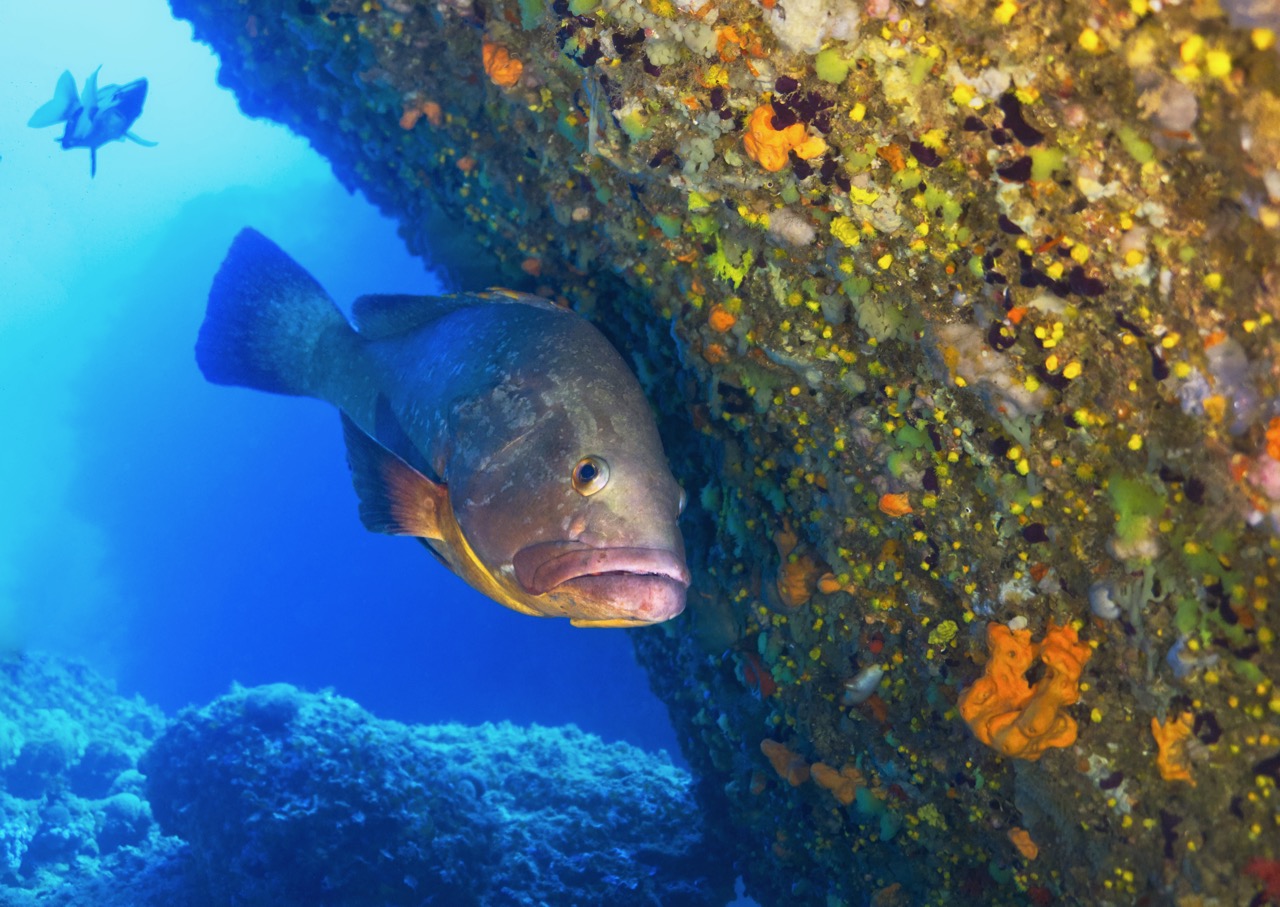
Lloret de Mar
After you immerse yourself in one of the most emblematic dives of the Costa Brava located in Lloret de Mar, the Roca Muladera, you can go for a walk through the beautiful village.
You will find the Castle of Lloret, located in the middle of a pine forest, the Church of Sant Romà with colorful mosaics on its ceiling and the impressive botanical garden of the Santa Clotilde.
L’Estartit
One of the best places to dive on the Costa Brava is the Medes Islands Natural Park, located near the town of L’Estartit. This park is a marine reserve with a rich diversity of marine life, including corals and a wide variety of fish species.
This small enclave between sea and mountains stands out for the presence of the Medes Islands in front of the coast. This archipelago is integrated into the territory of the “Natural Park of Montgrí, the Medas Islands and the Baix Ter” and was a refuge for pirates many centuries ago. It is made up of seven islets and reefs that house an underwater landscape of extraordinary biological and ecological value.
Since 1990, the Medes Islands has been protected for the conservation of the flora and fauna of the seabed. Thanks to this protection a spectacular recovery of the richness of its aquatic and terrestrial environment has been possible, such as the common stingray, red coral and posidonia. For these reasons, they are considered a diving paradise, where you can find giant groupers that attract the attention of divers because of how friendly they are.
In addition to a living seabed, there are numerous caves and underground tunnels, such as the Vaca cave, the Sardina cave, Dofí Nord or the Pedrosa tunnel, among others.
L’Escala
This sailers’ village offers a diversity of marine landscapes, from sandy beaches formed by coastal dunes to rocky hills and steep coves.
Diving off the coast of l’Escala is characterised by its diversity. Offering possibilities both by boat and leaving from the coast.
Half an hour by boat from the port, you can find the shipwreck called ‘El Marmoler’ for the cargo of marble it was transporting back at the time and that you can still find inside. This ship sunk in 1971 due to bad weather and rests at a depth 42 m. In the surroundings, sunfish and lobsters hidden in the holes of the ship are visible.
Also in the area is Cala Pedrosa, a cave in which we can see red coral and abundant lobsters.
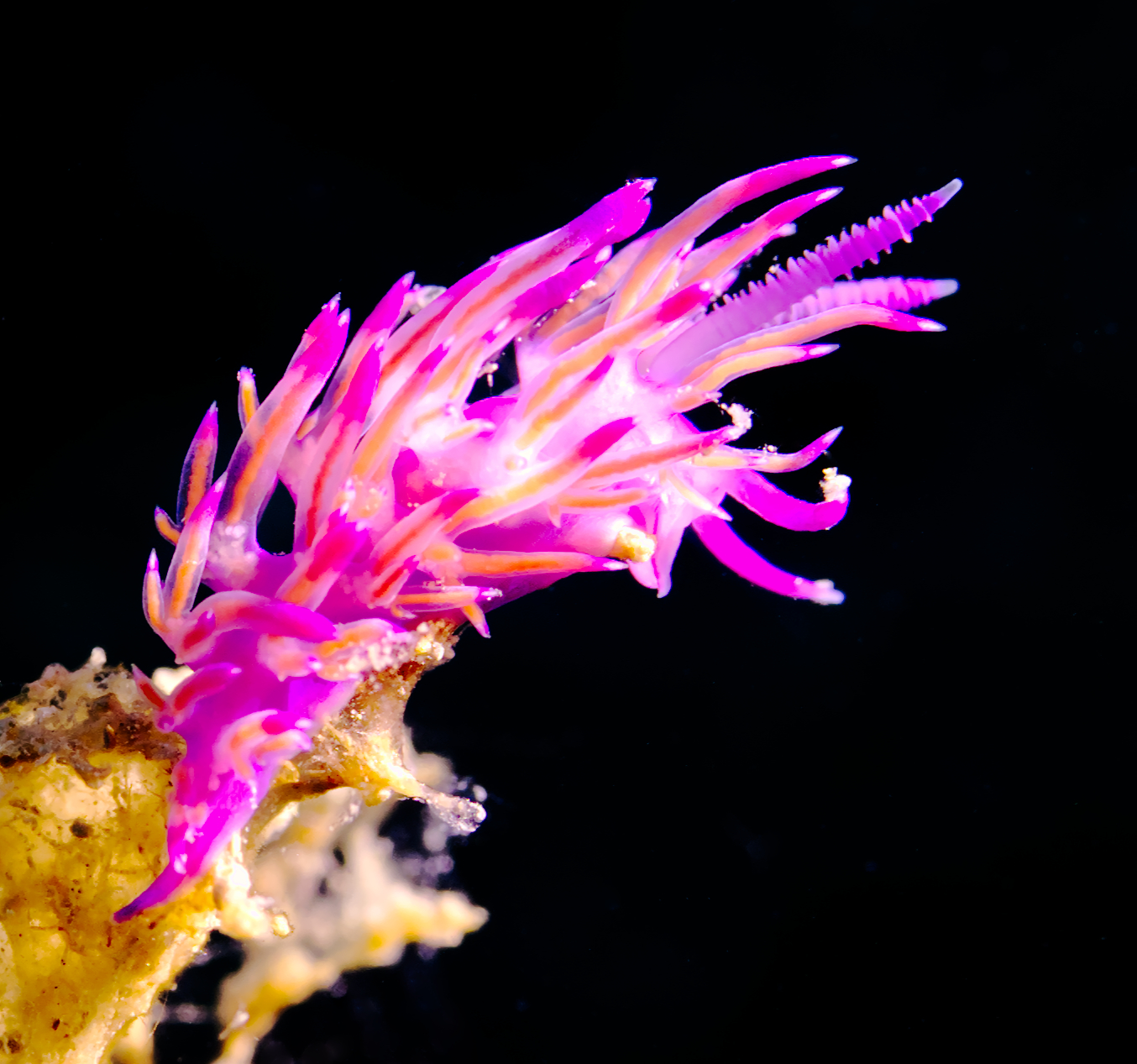
Roses
Roses is another ideal destination for combining a holiday with diving. This town with a fishing tradition and an important, very sheltered port to the south of the Cap de Creus is an ideal departure point for discovering the Natural Park.
You will also be able to discover a wide range of dives for all levels, such as the Cap Falcó and the Cap Norfeu.
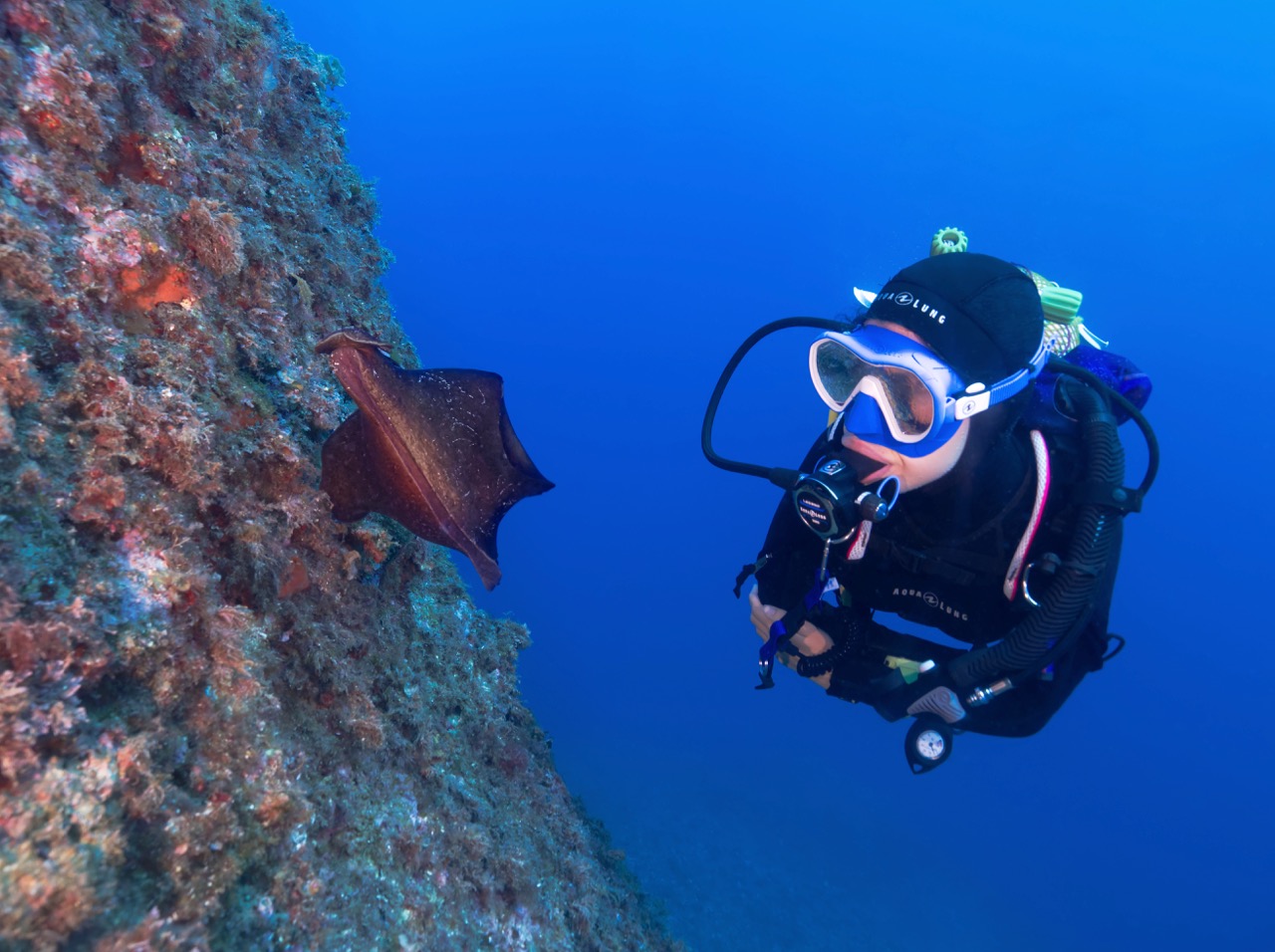
Cala Jòncols
Twelve kilometres outside Roses and following a dirt track for six kilometres, you will reach this fantastic cove. Jóncols Cove has a scuba diving centre and is well known among divers for the scuba diving sessions enjoyed here in a private and discrete manner.
This is indeed, a hidden stop not to be missed!
The Marine Life of Costa Brava
The seabed of the Costa Brava is not only home to a wide range of marine life but also offers a particularly beautiful landscape. Thanks to the richness of its biodiversity, it has become a very popular destination with diving enthusiasts.
The marine fauna that can be found in the Costa Brava includes a great variety of fish, molluscs, crustaceans and echinoderms, such as starfish and sea urchins. You can also frequently see many larger animals, such as octopus, conger eels and groupers.
As for the marine flora, the seabed of the Costa Brava has many areas of seagrasses which provide refuge for a large number of invertebrates and form a uniquely beautiful underwater landscape.
Divers can explore impressive underwater rock formations, such as drop-offs, arches, caves and caverns, all of which make the Costa Brava diving experience more exciting and unique. Whether an experienced diver or a beginner, the Costa Brava offers you a wide variety of possibilities for discovering and enjoying its underwater treasures.
The Costa Brava is an exciting and beautiful diving destination that offers a wide variety of options and activities for all levels and experience.
If we could sum up with just one sentence, whether you want to learn to scuba dive, continue your scuba training or simply enjoy a great place in the Med to scuba, diving in the Costa Brava has got to be in your bucket list!
